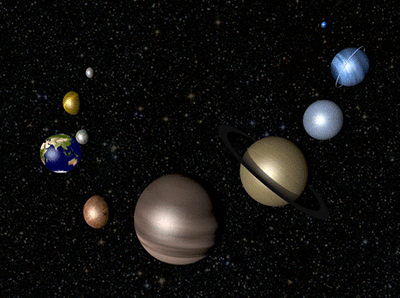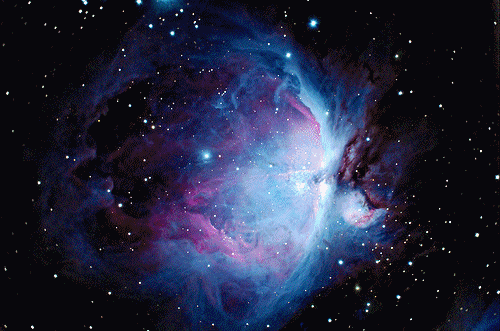

 |
The Amazing world of web designing |  |
|
|
 |
Facts about Space Science |
 |
| History of astronomy Astronomy includes the study of planets and their satellites, comets and meteors, stars and interstellar matter, star systems known as galaxies, and clusters of galaxies. The field of astronomy has developed from simple observations about the movement of the Sun and Moon into sophisticated theories about the nature of the universe. Advances in astronomy over the centuries have depended to a great extent on developments in technology. Initially, ancient peoples could only view the sky with their eyes. With careful attention to the changing positions of the Sun, Moon, planets, and stars, they were able to develop calendars and ultimately predictions of rare events, including eclipses. Instruments that allowed the measurement of the precise positions of celestial objects were the first major technological development, and those measurements formed the basis of models of the solar system. |
 |
 |
Comets Comet, small icy body in space that sheds gas and dust. Like rocky asteroids, icy comets are ancient objects left over from the formation of the solar system about 4.6 billion years ago. Some comets can be seen from Earth with the unaided eye. Comets typically have highly elliptical (oval-shaped), off-center orbits that swing near the Sun. When a comet is heated by the Sun, some of the ice on the comet's surface turns into gas directly without melting. The gas and dust freed from the ice can create a cloud (coma) around the body (nucleus) of the comet. More gas and dust erupt from cracks in the comet's dark crust. High-energy charged particles emitted by the Sun, called the solar wind, can carry the gas and dust away from the comet as a long tail that streams into space. Gas in the tail becomes ionized and glows as bluish plasma, while dust in the tail is lit by sunlight and looks yellowish. This distinctive visible tail is the origin of the word comet, which comes from Greek words meaning "long-haired star." |
| Asteroids Asteroid, small rocky or metallic body that orbits the Sun. Hundreds of thousands of asteroids exist in the solar system. Asteroids range in size from a few meters to over 500 km (300 mi) wide. They are generally irregular in shape and often have surfaces covered with craters. Like icy comets, asteroids are primitive objects left over from the time when the planets formed, making them of special interest to astronomers and planetary scientists. Most asteroids are found between the orbits of the planets Mars and Jupiter in a wide region called the asteroid belt. Scientists think Jupiter's gravity prevented rocky objects in this part of the solar system from forming into a large planet. The giant planet Jupiter’s gravity also helped throw objects out of the asteroid belt. The hundreds of thousands of asteroids now in the asteroid belt represent only a small fraction of the original population. |
 |
 |
Meteorites Meteorite, meteor that reaches the surface of Earth or of another planet before it is entirely consumed. Meteorites found on Earth are classified into types, depending on their composition: irons, those composed chiefly of iron, a small percentage of nickel, and traces of other metals such as cobalt; stones, stony meteors consisting of silicates; and stony irons, containing varying proportions of both iron and stone. Although most meteorites are now believed to be fragments of either asteroids or comets, recent geochemical studies have shown that a few Antarctic stones came from the Moon and Mars, from which they presumably were ejected by the explosive impact of asteroids. Asteroids themselves are fragments of planetesimals, formed some 4.6 billion years ago, while Earth was forming. Irons are thought to represent the cores of planetesimals, and stones (other than the aforementioned Antarctic ones) the crust. Meteorites generally have a pitted surface and fused, charred crust. |
| Nebula Nebula, in astronomy, a localized conglomerate of the gaseous and finely divided dust particles that are spread throughout interstellar space. Before the invention of the telescope, the term nebula (Latin, "cloud") was applied to all celestial objects of a diffuse appearance. As a result, many objects now known to be star clusters or galaxies were called nebulas.Nebulas exist within other galaxies as well as in our own Milky Way galaxy. They are classified as planetary nebulas, supernova remnants, and diffuse nebulas, including reflecting, emission, and dark nebulas. Small, very bright nebulas known as Herbig-Haro objects are found in dense interstellar clouds, and are probably the products of gas jets expelled by new stars in the process of formation.Planetary nebulas, or planetaries, are so called because many of them superficially resemble planets through telescopes. They are actually shells of material that an old average star sheds during a late, red giant stage in its evolution, before becoming a white dwarf. The Ring Nebula of the constellation Lyra, a typical planetary, has a rotational period of 132,900 years and a mass calculated to be about 14 times that of the earth's sun. Several thousand planetaries have been discovered in the Milky Way. |
 |

